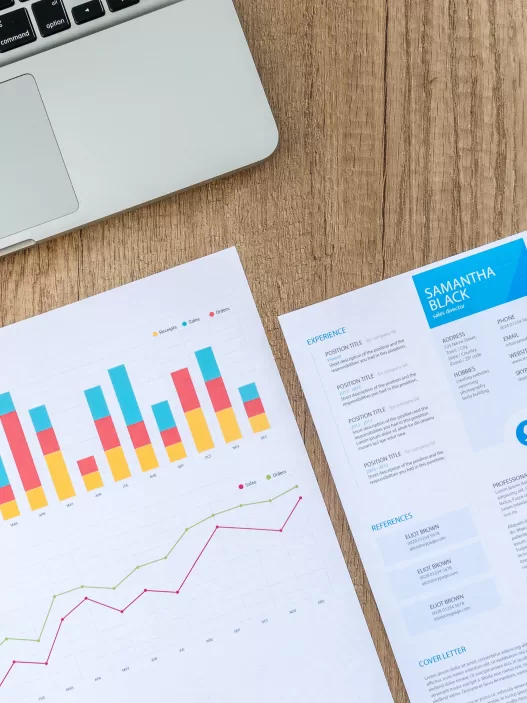
SEO in 2025? It’s evolved—again. The old tricks don’t work anymore, and if you’re still keyword stuffing and hoping for the best, you’re setting yourself up to fail. Google’s AI-driven algorithms are smarter than ever, prioritizing real value, user experience, and engagement over everything else.
So, if you want to win the SEO game in 2025, it’s all about creating high-impact content that ranks, converts, and keeps people coming back for more. Let’s break down what actually works today.
1. Know Your Audience (Like, REALLY Know Them)
In 2025, SEO success starts with understanding your audience on a deeper level. AI tools have made audience insights more detailed than ever, and if you’re not leveraging them, you’re falling behind.
How to do it right:
- Use AI-powered analytics (like Google Analytics 4 and HubSpot) to understand user behavior, intent, and engagement.
- Monitor social listening tools (Brandwatch, Sprout Social) to track industry conversations and pain points.
- Personalize content with dynamic data—no more one-size-fits-all messaging.
Pro Tip: Segment your audience by behavior, not just demographics. Personalized content = higher engagement + better SEO rankings.
2. High-Quality, AI-Assisted Content is King
Forget generic, churned-out content—2025 is all about high-value, AI-enhanced, and hyper-personalized content.
What makes content high-quality today?
✅ AI-enhanced insights: Use AI to generate topic ideas, optimize readability, and suggest improvements (tools like Jasper and SurferSEO).
✅ Human touch: AI helps, but authentic, expert-driven content builds trust.
✅ Interactive elements: Think quizzes, tools, and interactive infographics to keep users engaged.
✅ Keyword intent optimization: Focus on search intent (informational, navigational, transactional) rather than just keyword stuffing.
Pro Tip: Google’s EEAT (Experience, Expertise, Authoritativeness, and Trustworthiness) is more important than ever—bring real expertise to the table.
3. Search Intent is the Real MVP
Keywords alone won’t cut it anymore. Google’s algorithms are now hyper-focused on matching content to user intent.
How to optimize for intent:
- Analyze SERP intent before creating content—are people looking for guides, reviews, or quick answers?
- Optimize for voice search and AI assistants (e.g., Google Assistant, ChatGPT), which prioritize conversational queries.
- Use long-tail, intent-driven keywords that match specific user needs.
Pro Tip: Content that aligns with searcher intent will outrank even the most optimized but irrelevant pages.
4. Core Web Vitals Still Matter—A LOT
User experience (UX) is a major ranking factor in 2025. If your site is slow, clunky, or frustrating to use, Google will penalize you.
How to stay fast and user-friendly:
- Speed up load times: Aim for under 2 seconds by using CDN networks, image compression, and next-gen formats like WebP.
- Mobile-first everything: With mobile traffic dominating, your site must be 100% responsive and lightning fast.
- Interactive UX: AI-driven chatbots, personalized recommendations, and dynamic content enhance engagement.
- Accessibility: Ensure your site meets WCAG (Web Content Accessibility Guidelines) to improve usability and SEO.
Pro Tip: A seamless, fast-loading site isn’t just good for SEO—it’s good for business.
5. Video & Visual Content Dominate SEO Rankings
In 2025, video content is taking over. With platforms like TikTok, YouTube Shorts, and Instagram Reels influencing search rankings, Google now prioritizes rich media content.
How to leverage visual content for SEO:
- Optimize video metadata with relevant keywords and timestamps.
- Transcribe videos to improve accessibility and searchability.
- Use schema markup for video content to enhance search visibility.
- Create short-form videos that answer common industry questions.
Pro Tip: “How-to” and “explainer” videos are SEO gold—people (and Google) love them.
6. AI-Generated Content: Use It, But Don’t Abuse It
AI writing tools have exploded in popularity, and while they’re powerful, Google still favors original, human-driven content.
Best practices for AI content:
- Use AI for content ideation, outlines, and drafts, but always add a human touch.
- Fact-check AI-generated content—Google punishes misinformation.
- Maintain brand voice—don’t let your content sound robotic or generic.
- Focus on storytelling and unique insights AI can’t replicate.
Pro Tip: AI helps scale content, but authenticity and expertise win rankings.
7. Featured Snippets and Zero-Click Searches Are Prime Real Estate
With Google pushing more zero-click results (answers shown directly in search), getting that featured snippet is more valuable than ever.
How to land a featured snippet:
- Structure content with concise, scannable answers.
- Use question-based headings (e.g., “What is SEO?”) and provide direct, actionable answers.
- Leverage bullet points and numbered lists for easy indexing.
- Optimize for “People Also Ask” (PAA) queries by answering related questions.
Pro Tip: Winning snippets = brand visibility without needing clicks.
8. Authority-Driven Link Building Still Works
Backlinks remain a ranking powerhouse, but in 2025, it’s all about quality over quantity.
Smart link-building tactics:
- Build relationships with industry influencers and experts.
- Create data-driven content that naturally attracts backlinks.
- Leverage HARO (Help a Reporter Out) to get featured in high-authority publications.
- Guest post only on relevant, high-authority sites—spammy backlinks will tank your rankings.
Pro Tip: Focus on getting backlinks from authoritative sources in your niche.
9. Voice Search & Conversational Queries Are Skyrocketing
With smart devices and AI assistants everywhere, voice search optimization is no longer optional.
How to optimize for voice:
- Focus on natural language phrases (how people speak, not type).
- Use FAQs and concise answers that voice assistants can easily pull.
- Optimize for local intent—most voice searches are location-based.
- Ensure schema markup is implemented for better AI understanding.
Pro Tip: “Hey Google, what’s the best strategy for SEO?” Your content should answer that.
10. Measure, Analyze, and Pivot Regularly
SEO is never “set it and forget it.” In 2025, real-time analytics will be your best friend.
What to track:
- Organic traffic trends using GA4.
- Click-through rates (CTR) and bounce rates.
- Engagement metrics (time on page, shares, comments).
- Conversion rates from organic traffic.
Pro Tip: Use AI-powered tools like SEMrush and Ahrefs to get deep insights and adjust your strategy on the fly.
Final Thoughts: Adapt or Get Left Behind
SEO in 2025 is more dynamic than ever. If you want to stay ahead, you need to:
🔹 Create high-value, audience-first content.
🔹 Optimize for AI-driven search and voice queries.
🔹 Focus on UX and page speed like your rankings depend on it—because they do.
🔹 Stay flexible, keep learning, and keep evolving.
Ready to dominate search rankings in 2025? Let’s make it happen.
















